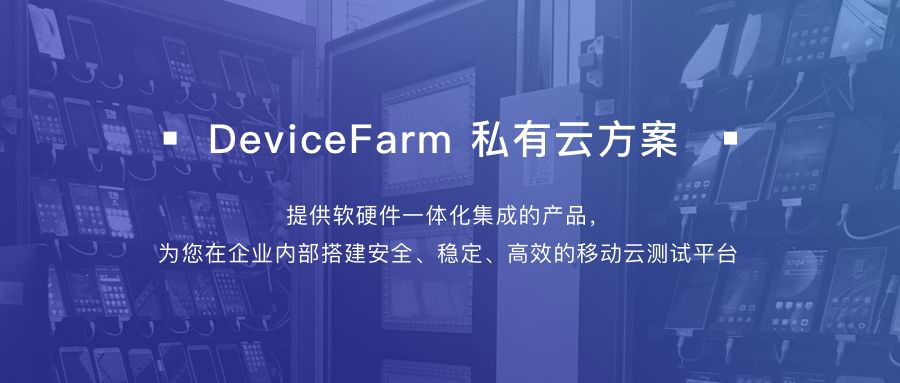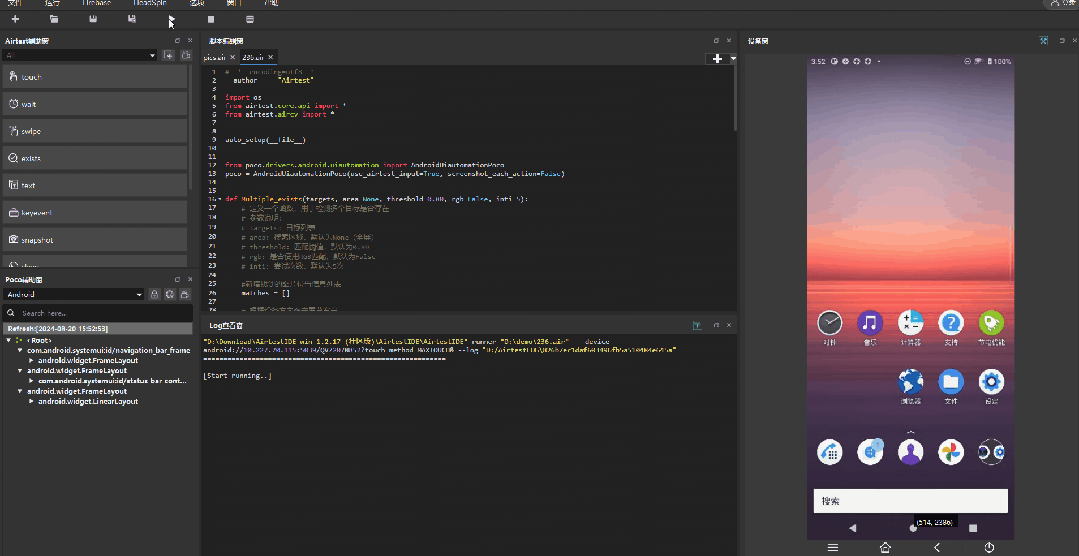批量图像识别的快速遍历技巧

一、前言
二、方法详解
Multiple_exists() 函数。该函数通过循环执行截图操作,每0.2秒进行一次,以最小化循环识别时间。接着将设备屏幕截图和目标图像传递给 match_in_predict_area() 函数,进行裁剪和搜索。一旦找到匹配的图像,立即将坐标信息反馈给 Multiple_exists() 函数,并最终将图像编号和位置信息返回至主函数,供进一步使用。
def match_in_predict_area(template, screen=None, rect=None): # 局部查找
# logger = Gvar.logger
if screen is None:
if G.DEVICE is None:
raise Exception("G.DEVICE is none.")
screen = G.DEVICE.snapshot() # 截屏
if screen is None:
raise Exception("snapshot is none.")
if rect is None:
return template.match_in(screen) # 如果没有指定区域,在整个屏幕中查找
if not isinstance(rect, (list, tuple)):
raise Exception("to crop a image, rect should be a list")
else:
# logger.debug("找到目标%s"%template.filename)
predict_screen = aircv.crop_image(screen, rect) # 图片裁切,根据指定区域裁剪屏幕
focus_pos = template.match_in(predict_screen) # 在裁剪后的图片中查找模板
if not focus_pos:
return False # 如果没有找到匹配,返回False
else:
return focus_pos[0]+rect[0], focus_pos[1]+rect[1] # 返回匹配位置,加上裁剪区域的偏移
# end if
# end def
def Multiple_exists(targets,area=None,threshold=0.80,rgb=False,inti=5):#多重查找
# 根据设备方向确定宽度和高度
if (G.DEVICE.display_info['orientation']%2):
width = G.DEVICE.display_info['height']
height = G.DEVICE.display_info['width']
else:
width = G.DEVICE.display_info['width']
height = G.DEVICE.display_info['height']
#end if
# 尝试多次查找目标
for i in range(inti):
#Gvar.logger.debug('第%d次查找%s'%(i,targets))
# 获取全屏截图
fullScreen = G.DEVICE.snapshot()
# 遍历每个目标
for target in targets:
#print("查找目标 %s"%target)
if target :
# 在预测区域内匹配目标,如果有元素固定出现的位置范围,可以传入,更进一步的减少识别时间
focus_pos = match_in_predict_area(Template( '%d\%s.png'%(width, target),
threshold=threshold, rgb=rgb),
fullScreen, area)
# 如果找到目标
if focus_pos:
#Gvar.logger.debug("找到目标 %s"%target)
ref = targets.index(target)
return ref,focus_pos
#endif
#end for
# 每次查找间隔0.2秒
sleep(0.2)
#end for
# 如果所有尝试都失败,返回-1和(-1,-1)
return -1,(-1,-1)
#end def Multiple_exists
三、实际使用案例
# -*- encoding=utf8 -*-
__author__ = "Airtest"
import os
from airtest.core.api import *
from airtest.aircv import *
auto_setup(__file__)
from poco.drivers.android.uiautomation import AndroidUiautomationPoco
poco = AndroidUiautomationPoco(use_airtest_input=True, screenshot_each_action=False)
def Multiple_exists(targets, area=None, threshold=0.80, rgb=False, inti=5):
# 定义一个函数,用于检测多个目标是否存在
# 参数说明:
# targets: 目标列表
# area: 搜索区域,默认为None(全屏)
# threshold: 匹配阈值,默认为0.80
# rgb: 是否使用RGB匹配,默认为False
# inti: 尝试次数,默认为5次
#新增找到的图片位置信息列表
matches = []
# 根据设备方向确定屏幕宽高
if (G.DEVICE.display_info['orientation'] % 2):
width = G.DEVICE.display_info['height']
height = G.DEVICE.display_info['width']
else:
width = G.DEVICE.display_info['width']
height = G.DEVICE.display_info['height']
# 在指定的尝试次数内循环查找目标
for i in range(inti):
# 获取当前屏幕截图
fullScreen = G.DEVICE.snapshot()
# 遍历所有目标
for target in targets:
if target:
# 构建目标图片的完整路径
template_path = os.path.join(str(width), f"{target}.png")
print(f"Trying to load template: {template_path}")
# 在指定区域内查找目标
focus_pos = match_in_predict_area(Template(template_path, threshold=threshold, rgb=rgb), fullScreen, area)
#若找到图片则将当前图片出现的位置传入列表中
if focus_pos:
matches.append((targets.index(target), focus_pos))
# 如果所有目标都找到,立即返回结果
if len(matches) == len(targets):
return matches
# 如果未找到所有目标,等待0.2秒后继续下一次尝试
sleep(0.2)
# 返回找到的所有匹配结果
return matches
def match_in_predict_area(template, screen=None, rect=None): # 局部找图
if screen is None:
if G.DEVICE is None:
raise Exception("G.DEVICE is none.")
screen = G.DEVICE.snapshot() # 获取设备屏幕截图
if screen is None:
raise Exception("snapshot is none.")
if rect is None:
return template.match_in(screen) # 如果没有指定区域,在整个屏幕中查找
if not isinstance(rect, (list, tuple)):
raise Exception("to crop a image, rect should be a list")
else:
# logger.debug("找到目标%s"%template.filename)
predict_screen = aircv.crop_image(screen, rect) # 裁剪指定区域的图片
focus_pos = template.match_in(predict_screen) # 在裁剪后的图片中查找模板
if not focus_pos:
return False # 如果没有找到匹配,返回False
else:
return focus_pos[0]+rect[0], focus_pos[1]+rect[1] # 返回匹配位置,加上裁剪区域的偏移
if __name__ == "__main__":
#打开游戏,去确认是否游戏开始界面的元素已就位
start_app("com.netease.dyll")
sleep(1.0)
poco(text="确定").click()
touch([0.5,0.5])
sleep(0.2)
# 定义目标图片的路径列表
targets = [r"D:/demo/pics.air/tpl1724135823600",r"D:/demo/pics.air/tpl1724135830426",r"D:/demo/pics.air/tpl1724135836266"]
# 调用multiple_exists函数,查找游戏开始界面的图片识别情况
result = Multiple_exists(targets)
# 打印查找结果
for i in range(len(result)):
print("图片{}的位置是:{}".format(i+1,result[i]))
# 判断是否已进入游戏开始界面
if len(result) == len(targets) :
print("确认已进入到游戏的开始界面")
四、总结


 )
)

本文分享自微信公众号 - AirtestProject(AirtestProject)。
如有侵权,请联系 support@oschina.cn 删除。
本文参与“OSC源创计划”,欢迎正在阅读的你也加入,一起分享。





